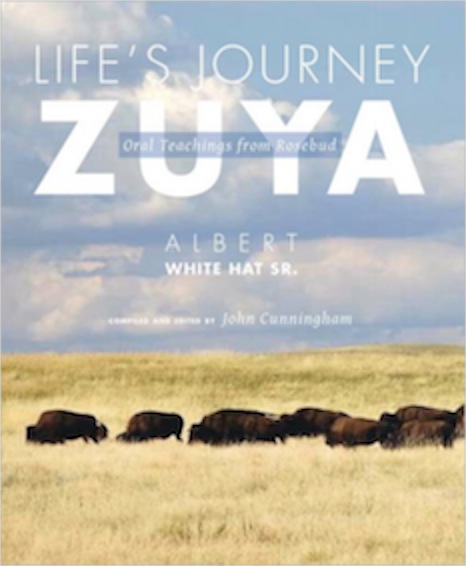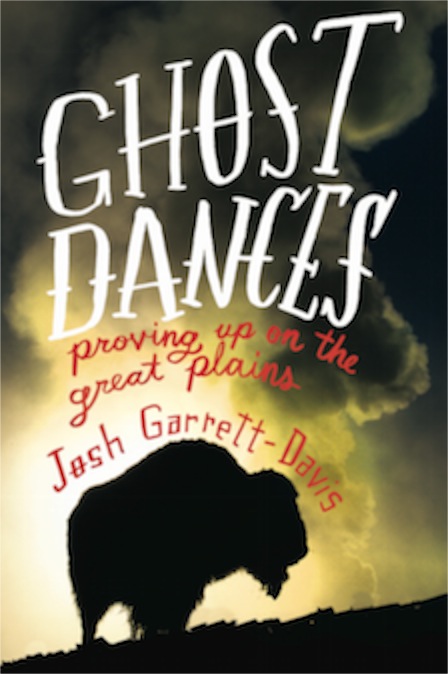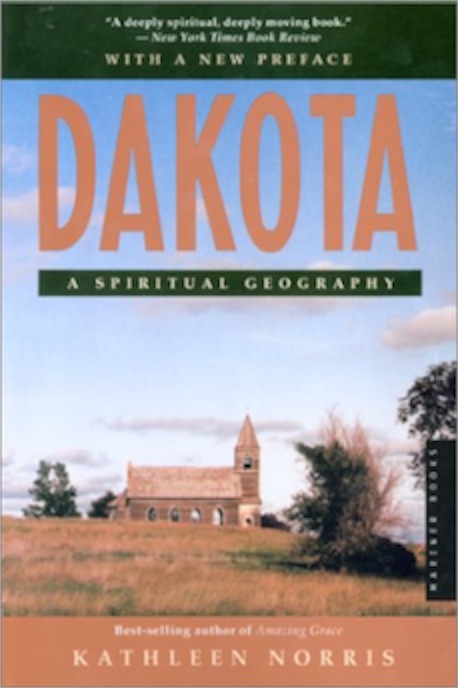At home in South Dakota
03/11/12 05:25
I come from relatively nomadic people. On my father’s side of the family, you have to go back a long time to find relatives who lived in the same place for more than a couple of generations. His grandfather achieved a modest success through the homestead act. His father left the farm behind. He was relatively successful in business. But for the most part our people were peasants and roamers.
On my mother’s side parts of the family have settled down after her grandparents migrated to Montana. There are still family members on the original homestead more than a century and a quarter after relatives arrived with the steamboats making their way up the Missouri River to Fort Benton.
I have followed in the family tradition, leaving our home for college and from their leaving the state. Including the state of my birth, I have lived in five states and I stayed a decade or more in three of them.
I have felt the suspicions that are directed toward newcomers. I know how natives can wonder whether a newcomer will ever fit into a community. Still, I feel myself to be a South Dakotan at this point. I claim my membership in the community and think I have a basic understanding of life in the hills and on the plains. Knowing that I cannot claim “native” status doesn’t really bother me. I have been called to live and minister in the midst of the people and it seems to me to be a good fit. As ministers go, I’ve been pretty stable. Most of my colleagues moved to town after I did.
 I’ve been thinking about the issues of natives and newcomers lately because I have been reading a couple of interesting books about South Dakota. One is “Zuya” by Albert White Hat Sr. John Cunningham has compiled and edited the oral teachings of one of the elders of the Rosebud community. It is a very well crafted book that gives a clear insight into Lakota culture, religion and history. From my perspective, it may be more significant than “Black Elk Speaks” in terms of giving non-indigenous people insight into the story of Dakota, Nakota and Lakota people.
I’ve been thinking about the issues of natives and newcomers lately because I have been reading a couple of interesting books about South Dakota. One is “Zuya” by Albert White Hat Sr. John Cunningham has compiled and edited the oral teachings of one of the elders of the Rosebud community. It is a very well crafted book that gives a clear insight into Lakota culture, religion and history. From my perspective, it may be more significant than “Black Elk Speaks” in terms of giving non-indigenous people insight into the story of Dakota, Nakota and Lakota people.
 The second book is vastly different. “Ghost Dances” by Josh Garrett-Davis is the memoir of a young man who was born and mostly raised in South Dakota. Davis lived in Aberdeen, Vermillion, Pierre, and Hot Springs as well as spending parts of some years in Portland, Oregon during his growing up. He went back east to attend college and has not returned to South Dakota to live, but his book wrestles with the meaning of life on the plains and the ways in which the geography affects culture.
The second book is vastly different. “Ghost Dances” by Josh Garrett-Davis is the memoir of a young man who was born and mostly raised in South Dakota. Davis lived in Aberdeen, Vermillion, Pierre, and Hot Springs as well as spending parts of some years in Portland, Oregon during his growing up. He went back east to attend college and has not returned to South Dakota to live, but his book wrestles with the meaning of life on the plains and the ways in which the geography affects culture.
 I may write more about both of these books, but not in this blog. Reading them at the same time provides a stark contrast between their stories. Both books reminded me of the experience of reading “Dakota” by Kathleen Norris. Let me see if I can explain. I met Kathleen Norris before her first book was published. At the time we were both outsiders in the territory along the North Dakota - South Dakota Border towns of Hettinger, Haines and Lemmon. She had family ties to the area, but had come with her “back east” education. I was a young minister and the community had watched a lot of young ministers come and go. I had moved to Idaho by the time I got to read the book, “Dakota: A Spiritual Geography.” I thought that it was a wonderful description of the people and the place where I had lived. I enjoyed the book immensely. But when I went back to visit, I found that there were many locals who were not happy with it. I heard comments like “She doesn’t like us,” and “She makes us look stupid.” There was something in the descriptions of her neighbors that struck a chord as being not quite accurate. I, however, couldn’t see it. I don’t think that the book shows signs of Norris not liking or respecting the people of Adams and Perkins counties. I have pondered the question ever since. It remains a mystery to me.
I may write more about both of these books, but not in this blog. Reading them at the same time provides a stark contrast between their stories. Both books reminded me of the experience of reading “Dakota” by Kathleen Norris. Let me see if I can explain. I met Kathleen Norris before her first book was published. At the time we were both outsiders in the territory along the North Dakota - South Dakota Border towns of Hettinger, Haines and Lemmon. She had family ties to the area, but had come with her “back east” education. I was a young minister and the community had watched a lot of young ministers come and go. I had moved to Idaho by the time I got to read the book, “Dakota: A Spiritual Geography.” I thought that it was a wonderful description of the people and the place where I had lived. I enjoyed the book immensely. But when I went back to visit, I found that there were many locals who were not happy with it. I heard comments like “She doesn’t like us,” and “She makes us look stupid.” There was something in the descriptions of her neighbors that struck a chord as being not quite accurate. I, however, couldn’t see it. I don’t think that the book shows signs of Norris not liking or respecting the people of Adams and Perkins counties. I have pondered the question ever since. It remains a mystery to me.
Although her living has been earned as a writer and not a rancher, I think that Kathleen Norris does a very good job of understanding, appreciating and living the culture of South Dakota.
There is, however, a sense in which none of us fully understands this place.
Davis is the son of parents who weren’t native to South Dakota. His father comes from the east, his mother from the west. Neither was what one might call “mainstream.” And Davis is clearly writing about South Dakota as one who has chosen to leave. He hasn’t cast his lot with the people of this place. His seeking to understand South Dakota is part of a quest to understand himself.
In a rather strange way, Albert White Hat, Sr., also presents books that don’t quite tell the story of South Dakota. Part of it might be the fact that each of his books is produced with a different co-author or editor and none of his co-writers are South Dakotans. The Rosebud attracts a steady stream of spiritual tourists who come to the reservation to learn something of Lakota Culture, to seek some meaning from contact with Indigenous people, and to try to understand. But these folks, while perhaps forging life-long friendships, never stay. They spend some time on the Rosebud and go on to more luxurious lifestyles in other places. Their distinct non South Dakota realities enter into the writing. But on a deeper sense, even a Lakota Elder doesn’t fully belong to one place. Like my ancestors, the ancestors of Lakota people were nomadic. Although they arrived in the Dakotas more than a century before Europeans, they come from a lineage of wanderers who lived in many different places.
We are shaped by the land, but in a sense we never belong to any one place. Ever since Abram and Sarai set off to the land that God was to show them, our history has been more than one place. Maybe none of use really understands South Dakota. The power of the hills, badlands and plains is beyond any individual. Maybe each life is a strange combination of “fitting” and “not quite fitting” in the same place. Maybe the Psalmist got it right when he observed that our home isn’t a place at all: “Lord, thou has been our dwelling place in all generations.”
On my mother’s side parts of the family have settled down after her grandparents migrated to Montana. There are still family members on the original homestead more than a century and a quarter after relatives arrived with the steamboats making their way up the Missouri River to Fort Benton.
I have followed in the family tradition, leaving our home for college and from their leaving the state. Including the state of my birth, I have lived in five states and I stayed a decade or more in three of them.
I have felt the suspicions that are directed toward newcomers. I know how natives can wonder whether a newcomer will ever fit into a community. Still, I feel myself to be a South Dakotan at this point. I claim my membership in the community and think I have a basic understanding of life in the hills and on the plains. Knowing that I cannot claim “native” status doesn’t really bother me. I have been called to live and minister in the midst of the people and it seems to me to be a good fit. As ministers go, I’ve been pretty stable. Most of my colleagues moved to town after I did.



Although her living has been earned as a writer and not a rancher, I think that Kathleen Norris does a very good job of understanding, appreciating and living the culture of South Dakota.
There is, however, a sense in which none of us fully understands this place.
Davis is the son of parents who weren’t native to South Dakota. His father comes from the east, his mother from the west. Neither was what one might call “mainstream.” And Davis is clearly writing about South Dakota as one who has chosen to leave. He hasn’t cast his lot with the people of this place. His seeking to understand South Dakota is part of a quest to understand himself.
In a rather strange way, Albert White Hat, Sr., also presents books that don’t quite tell the story of South Dakota. Part of it might be the fact that each of his books is produced with a different co-author or editor and none of his co-writers are South Dakotans. The Rosebud attracts a steady stream of spiritual tourists who come to the reservation to learn something of Lakota Culture, to seek some meaning from contact with Indigenous people, and to try to understand. But these folks, while perhaps forging life-long friendships, never stay. They spend some time on the Rosebud and go on to more luxurious lifestyles in other places. Their distinct non South Dakota realities enter into the writing. But on a deeper sense, even a Lakota Elder doesn’t fully belong to one place. Like my ancestors, the ancestors of Lakota people were nomadic. Although they arrived in the Dakotas more than a century before Europeans, they come from a lineage of wanderers who lived in many different places.
We are shaped by the land, but in a sense we never belong to any one place. Ever since Abram and Sarai set off to the land that God was to show them, our history has been more than one place. Maybe none of use really understands South Dakota. The power of the hills, badlands and plains is beyond any individual. Maybe each life is a strange combination of “fitting” and “not quite fitting” in the same place. Maybe the Psalmist got it right when he observed that our home isn’t a place at all: “Lord, thou has been our dwelling place in all generations.”